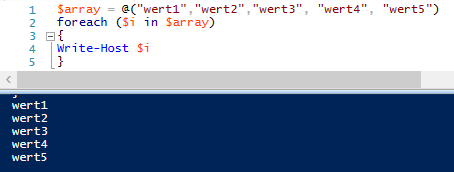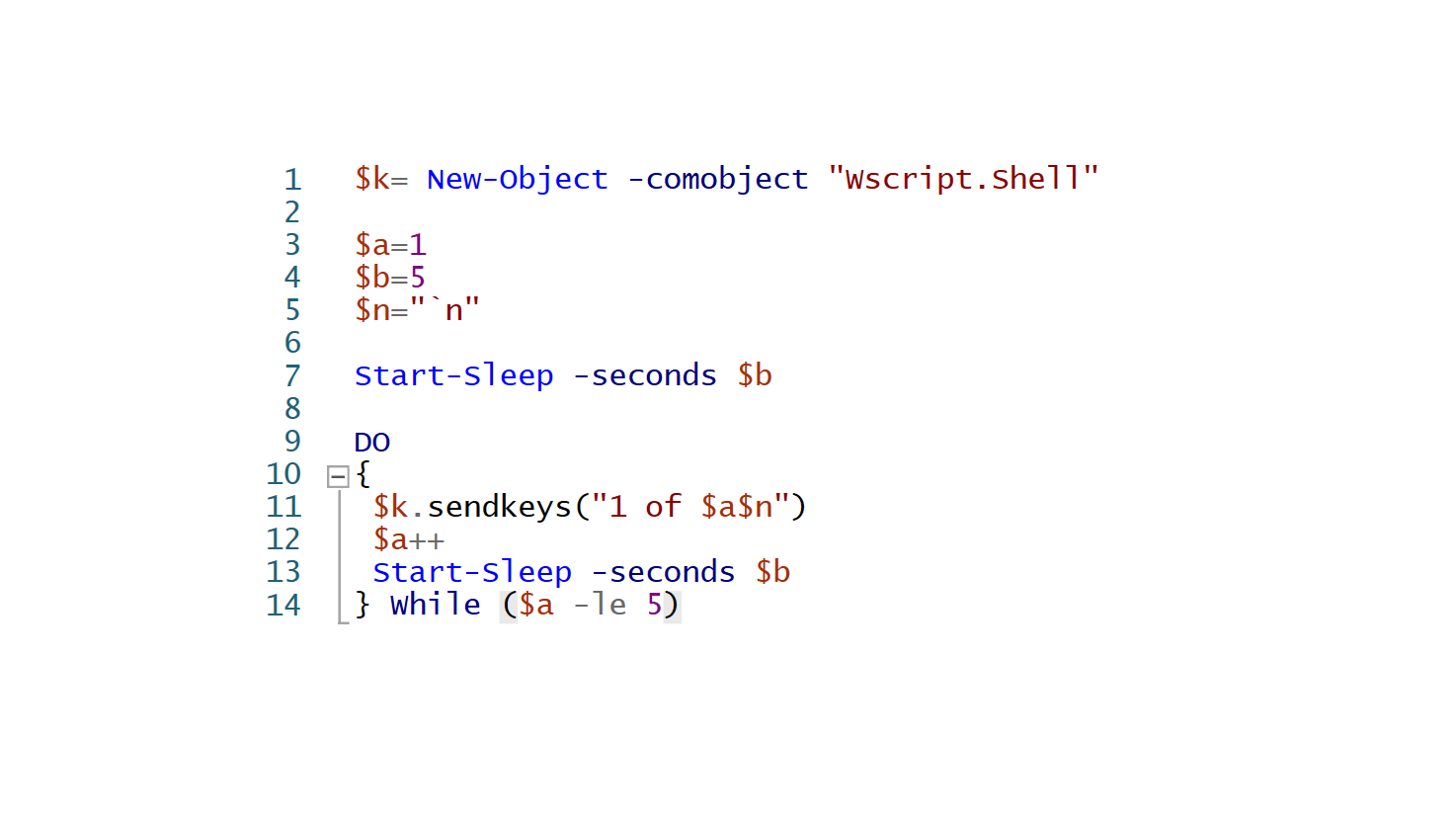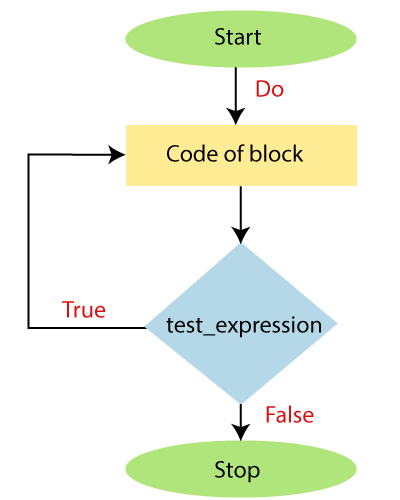
The loop progresses until $A reaches a value of 0. Once again, we are starting by setting $A to 10, and then we are looping the code, decrementing the $A variable during each loop. Here is what the script that I have been using so far would look like if rewritten to use a Do loop: $A=10 The Do loop is very similar to the While loop and the For loop, but there is one very important difference. The last type of loop that I want to show you is the Do loop.

Powershell script for loop code#
Also, the code used to decrement the loop counter is found in the loop body rather than in the loop declaration. On the other hand, the While loop gets its starting value from outside of the loop, which means that this type of loop is going to be the better choice if you want to base the number of loops on an existing variable. The For loop includes the starting value, the terminating condition, and the code to decrement the loop counter within the loop declaration (For ($A = 10 $A -GE 1 $A-)). The other big difference between the way that these two loops is in the way that the loop is declared. But you may find it is more convenient to use one type of loop over the other, depending on the situation. Oftentimes, these two types of loops can be used interchangeably. A For loop processes until a specific condition is met, whereas a While loop progresses so long as a condition is not met. It’s a subtle difference, but it's an important one. The While loop does the same thing, but rather than indicating that the value of $A has to be greater than or equal to 1, this loop will function so long as $A is greater than zero. This means that the loop will terminate when the value of $A reaches 0. It is essentially saying that the loop will be allowed to run if the value is greater than or equal to 1. The terminating value used in the for loop works kind of like an if statement. The first difference is in the terminating value that I used for the loop. $A =10Įven though this loop does exactly the same thing as the For loop that I showed you a moment ago, there are two key differences. The block of code shown below does essentially the same thing as the For loop that I showed you in the previous section. Like a For loop, a While loop only progresses until a certain condition is true. Each time the loop processes, the value of $A is decreased by 1 ($A-) until the value eventually reaches 1, which causes the loop to terminate.Ī While loop functions in a way that is really similar to a For loop. If the contents of this variable are greater than or equal to 1 (-GE 1), then the loop runs. } In this case, the for loop is setting a variable named $A to a value of 10. Here is an example: For ($A = 10 $A -GE 1 $A-) A For loop is usually based on a number that determines how many times the loop will run. PowerShell also allows you to create a For loop. The ForEach loop then performs an action (in this case, it calls a function called Do-Something) for each process in the list of processes. The first line creates a variable named $Processes and maps it to the list of processes. The code would look something like this: $Processes = Get-Process

For example, suppose that you wanted to create a list of all of the processes running on a computer and then take some sort of action for each process.

I wanted to start out by talking about ForEach loops because this is the loop type that I find myself using most often.Ī ForEach loop is useful when you need to take action on each item in a collection of items. As such, I wanted to take the opportunity to talk about the various types of loops that exist and when it is appropriate to use each one. While there is nothing overly complex about creating a loop, PowerShell supports several different types of loops. Even so, looping isn’t quite as straightforward as it might at first seem. Loops are very commonly used in PowerShell scripts, and the vast majority of the scripts that I have written over the years have included at least one loop.


 0 kommentar(er)
0 kommentar(er)
